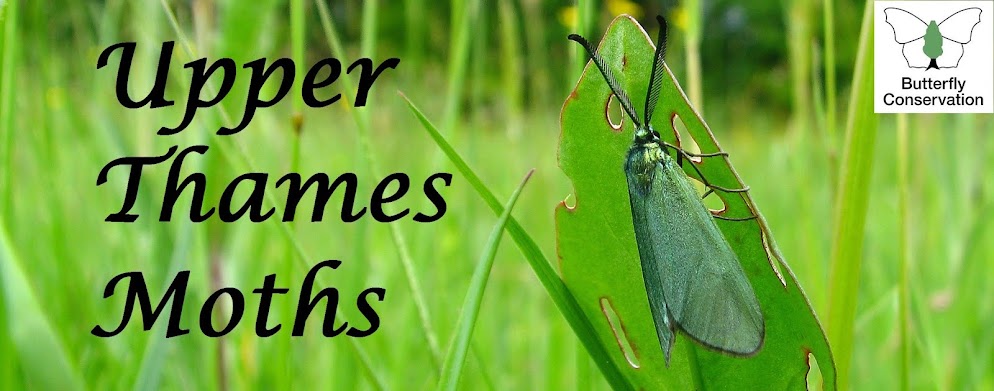If you have yet to dust off your trap for this season, now's the time to do it! A single MV light run for three hours from dusk in
Finemere Wood, Bucks last night did at last produce a reasonable total of moths from 20 different species, even though the only food source there at the moment would appear to be hazel catkins. Like everywhere else locally, there is no sallow blossom available yet (Marc must have been lucky to find a flowering bush at Chimney Meadows the other day). The trap produced
Tortricodes alternella (62),
Agonopterix heracliana (2),
Acleris ferrugana/notana (1), Yellow Horned (10), March Moth (11), Shoulder Stripe (7), Red-green Carpet (1), Engrailed (3), Small Brindled Beauty (25), Pale Brindled Beauty (4), Oak Beauty (2), Spring Usher (1), Dotted Border (6), Small Quaker (26), Common Quaker (41), Clouded Drab (7), Twin-spotted Quaker (3), Hebrew Character (3), Satellite (5) & Chestnut (26). Back home at
Westcott the garden actinic trap didn't do too badly either, bringing in
Agonopterix heracliana (3),
Agonopterix arenella (2), Dotted Border (2), Small Quaker (1), Common Quaker (6), Clouded Drab (1), Hebrew Character (6), Grey Shoulder-knot (1) & Chestnut (2). At least in our garden there is some nectar available from mahonia which is a useful winter-flowering plant to have. It is always worth inspecting the flowers even if the trap is in operation nearby.
Dave Wilton
 |
| Yellow Horned, Finemere Wood 11th March |
 |
| Twin-spotted Quaker, Finemere Wood 11th March |
 |
| Common Quaker, Westcott 11th March |












%2Bon%2Bleaf%2B22-Mar-15.JPG)














.JPG)

















